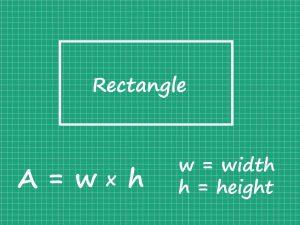Key Concepts
- Explain the graph of 𝒈(𝒙)=x2+k
- Explain the graph of 𝒈(𝒙)=(x-h)2
- Define the vector form of a quadratic function
- Graph using vertex form of a quadratic function
Vertex form of the quadratic function
The function f(x) = a(x−h)2+k where a≠0 is called the vertex form of the quadratic function.

- The vertex of the graph g is (h, k).
- The graph of f(x) = (x−h)2+k is a translation of the function f(x) = x2 that is translated in h units horizontally and kk units vertically.
- The value of a does not affect the location of the vertex.
Graph of g(x) = x2 + k
- The value of k in g(x) = x2+k translates the graph of parent function f, vertically k units.
- The value of k does not affect the axis of symmetry.

Graph of g(x) = (x−h)2
- The value of h in g(x) = (x−h)2 translates the graph of parent function f, horizontally h units.
- The vertex of the graph g is (0, h).

- The value of h translates the axis of symmetry.
Graph using vertex form of the quadratic function
- Step 1: Plot the vertex and axis of symmetry.
- Step 2: Evaluate the function to find other points.
- Step 3: Draw the parabola through the points.
Exercise
1. Identify the vertex and axis of symmetry of graph g(x) = x2+2.
2. Write the function in vertex form.

3. Sketch the graph of f(x) = 0.5(x + 2)2 + 2.
4. Write the function in vertex form.

5. Identify the vertex and axis of symmetry of graph g(x) = -0.75(X – 5)2 + 6.
Concept Map
- The function f(x) = a(x−h)2+k where a≠0 is called the vertex form of the quadratic function.
- The vertex of the graph g is (h, k)
- The graph of f(x) = (x−h)2+k is a translation of the function f(x) = x2 that is translated h units horizontally and k units vertically.

What have we learned
- The function f(x) = a(x−h)2+k where a≠0 is called the vertex form of the quadratic function.

Related topics
Addition and Multiplication Using Counters & Bar-Diagrams
Introduction: We can find the solution to the word problem by solving it. Here, in this topic, we can use 3 methods to find the solution. 1. Add using counters 2. Use factors to get the product 3. Write equations to find the unknown. Addition Equation: 8+8+8 =? Multiplication equation: 3×8=? Example 1: Andrew has […]
Read More >>Dilation: Definitions, Characteristics, and Similarities
Understanding Dilation A dilation is a transformation that produces an image that is of the same shape and different sizes. Dilation that creates a larger image is called enlargement. Describing Dilation Dilation of Scale Factor 2 The following figure undergoes a dilation with a scale factor of 2 giving an image A’ (2, 4), B’ […]
Read More >>How to Write and Interpret Numerical Expressions?
Write numerical expressions What is the Meaning of Numerical Expression? A numerical expression is a combination of numbers and integers using basic operations such as addition, subtraction, multiplication, or division. The word PEMDAS stands for: P → Parentheses E → Exponents M → Multiplication D → Division A → Addition S → Subtraction Some examples […]
Read More >>System of Linear Inequalities and Equations
Introduction: Systems of Linear Inequalities: A system of linear inequalities is a set of two or more linear inequalities in the same variables. The following example illustrates this, y < x + 2…………..Inequality 1 y ≥ 2x − 1…………Inequality 2 Solution of a System of Linear Inequalities: A solution of a system of linear inequalities […]
Read More >>Other topics











Comments: